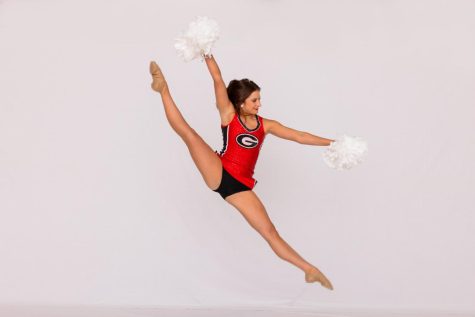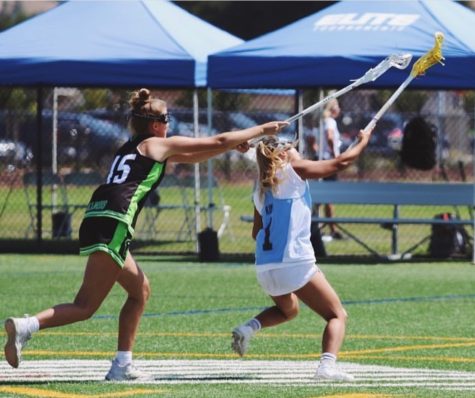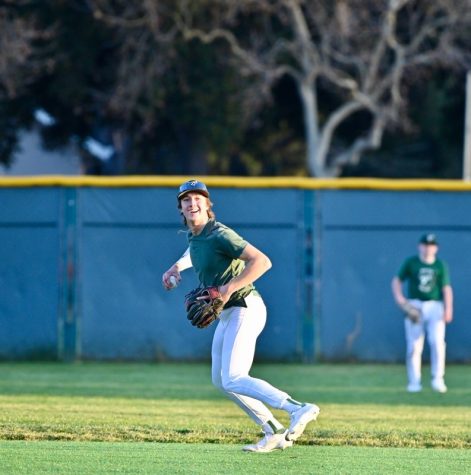Social Media @thletes
Much to everyone’s knowledge, famous and iconic athletes use social media accounts to publicize their success; however, something that is kept under wraps is the growing popularity of young, aspiring athletes’ presence on social media. The creative use of these applications is creating countless door-openers, whether that be related to recruitment or sponsorships.
The use and application of social media are constantly evolving, giving users access to a variety of benefits to further their own progress on and off the field. High school and collegiate athletes of Gen-Z have begun to use their social media platforms to expand their following, inspire young athletes, and increase opportunities within their sport — whether for recruitment or athletic advancement. The outsized influence that these athletes have comes with the opportunity, and responsibility, to advertise products and receive sponsorships for financial gain. Here’s a look at how social media has reshaped the collegiate sports landscape from the perspective of a select few elite NCAA athletes.
Claire Hauf, a sophomore on the Dance Dawgs spirit squad at the University of Georgia, has taken advantage of the NCAA’s recent decision to let athletes profit off of their name, image, and likeness (NIL). Hauf has partnered with Liquid IV, a beverage company, and receives monthly income from the University of Georgia.
“Most athletes [at UGA] get a stipend and other sports actually get more,” Hauf said. “I think it depends on how much money the sport itself brings in for the university.”
UGA implemented this program to help give student-athletes a source of income because they don’t have time to work a job with their sports commitments and school work.
“My sport is basically my job,” Hauf said. “UGA supports us because we can’t have a real one.”
However, with financial endorsements comes responsibility. Hauf takes her sport more seriously now that the school she dances for is supporting her financially.
“I have to always make sure I come to practice prepared and that I’m doing everything I can outside of practice to keep up my personal health and fitness,” Hauf said.
She also has to be responsible for her presence on social media through her team’s Instagram page as well as her personal use of social media. Hauf is always conscious of how she represents the team and makes sure that while she’s out, she is aware of the photos that are being taken and posted. The Dance Dawgs also have a team account that they use to post dance videos, game recaps, team shoots, and workouts so that they can grow their following and people can see what they do behind the scenes.
“I think a lot of people don’t realize the preparation and practice that we do, so social media allows us to shed light on that a little bit more while also bringing attention to our program,” Hauf said.
While being a paid athlete with a social media presence can be a big commitment, Hauf is proud of what she does and believes the new rules are certainly for the best.
“I think it’s a huge step in the right direction to finally allow athletes to earn money for their name, image, and likeness,” Hauf said. “It’s been a long time coming so it’s super cool to see history change while I am an athlete in college.”
While not at the collegiate level, Paly junior Delaney Ball has also received sponsorships that are mostly credited to her savvy use of her Instagram page. She first created her platform in 2019 to document her scootering and inspire other girls to pick up scootering. Excelling at a male-dominant sport, Ball quickly gained a following and different companies began reaching out to her. She was able to pick up two sponsorships with Tilt and HellaGrip who send her gear and scooter parts that she reps in her posts.
“Once I got sponsored, I started taking scootering more seriously because I realized I could actually make money off a hobby I loved,” Ball said.
Trying to grow her following even further, Ball expanded her social media presence to another platform: TikTok. The start of her new account increased her following on both platforms exponentially. She became a scooter icon, and her sponsors began flying her out to different scooter events in Chicago, Boston, and even Barcelona.
“Now when I go to local skate parks, kids come up to me and ask for photos and autographs,” Ball said. “It feels good that people love what I’m doing and that I’m inspiring the younger generation to continue scootering.”
Phoebe Kim, a senior at Sacred Heart Prep and Stanford commit, also began using social media to inspire young athletes and encourage them to begin lacrosse.
Kim picked up lacrosse in 8th grade and fell in love with the sport immediately. She spent the entirety of that summer practicing for hours every day and waking up early for workouts.
Instantly she was drawn to the intricacies of the lacrosse stick, and how the stringing of a stick changed the way one catches and cradles the ball. She bought strings and began experimenting with different knots and adjustments and used Instagram to post her results and progress. Kim slowly gained recognition and younger athletes began reaching out to ask Kim if she could string their sticks.
“I ended up stringing more than 100 sticks for girls around the country for free,” Kim said. “The sport of lacrosse already has many disparities for girls with lower socioeconomic status and I wanted to lessen this by providing high-quality lacrosse sticks to as many people as possible.”
She was excited to inspire young athletes to pick up lacrosse through her stick stringing and also help those who couldn’t afford sticks still be able to play. Through her platform, she created a network within the girl’s lacrosse community to inspire other girls, and grow the game of lacrosse.
As Kim became more serious about her sport, she began using her account to post videos of her practices. She took video compilations of all her workouts, challenging other athletes to try her tricks. As Kim grew her following and skill, she realized her potential to play in college. Her platform became a resource for competitive lacrosse programs and college coaches to reach out to her. When Kim began her recruiting process, many coaches began following her lacrosse and main account.
“Almost all of the Division 1 programs I was seriously considering followed my social media profiles,” Kim said. “My recruiting process was heavily online based as we were in the height of COVID, so my lacrosse account was a topic that came up a lot on my zoom and phone calls with many coaches. They loved my account and wanted me to talk more about it.”
Like Kim, Eveliena Pasmooji also utilized social media to help with her commitment through COVID. As a Castellija senior and New York University volleyball commit, she used social media as a media to attract attention, interact with recruiters, and ultimately commit to a stellar program.
Pasmooji went through most of the recruitment process during the COVID-19 pandemic, which added another challenge to the recruiting process. Social media became one of the main ways to connect with colleges across the country. Since college coaches weren’t allowed to attend Pasmooji’s tournaments and many camps were closed, platforms for sharing video with coaches became crucial.
“YouTube became so much more important because it provided a way for coaches to see us in action even if it wasn’t live,” Pasmooji said. “All I had to do was send a link to the videos.”
Pasmooji took advantage of the new approach to recruiting by giving coaches the opportunity to see as much film as possible.
“I would post highlight videos from tournaments and practices almost every week and then would send them to every college that I was talking to,” Pasmooji said.
Despite the challenges that COVID presented, her passion for volleyball was stronger than the pandemic. Social media allowed Pasmooji to harness her passion for the sport and landed a commitment to New York University.
While some, like Pasmooji, made extensive use of YouTube during the recruiting process, the social media of choice for Palo Alto High School sophomore Charlie Bates was Twitter.
The NCAA prohibits college scouts from directly reaching out to athletes until September 1st of their junior year — which poses a challenge for hopeful high school athletes dreaming of receiving offers. In order to get around this obstacle, Bates made use of the loophole of social media.
“Usually I’ll post a highlight or two from the tournament and then I’ll provide a comment under [the post] saying my stats for the games,” Bates said.
By using social media as a conduit for early communication between recruiters and recruits, athletes are able to secure early verbal commitments — as Bates did to Stanford.
Social media has given coaches access to scout younger and younger athletes; Bates created his Twitter handle in seventh grade.
“It was a big step because it was the first time I was exposed to the collegiate level,” Bates said.
Questions about the mental health challenges that come with increasingly early exposure for young athletes abound, but there’s no doubt that the next generation of great athletes will grow up with the eyes of the world upon them on social media.
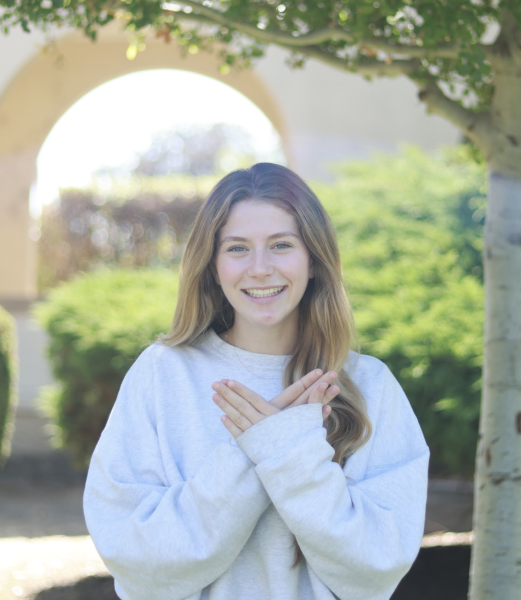
Hi! Im Josie, Editor-in-Chief for Viking's 2023-2024 school year. I play soccer and lacrosse at Paly and enjoy watching all Paly sports! Fun Fact: I am...
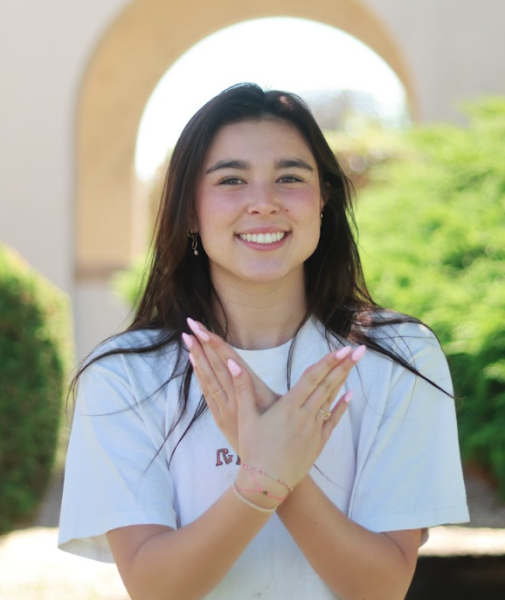
Hey y'all! My name is Katie Yen and this is my third and final year on Viking Magazine! This year I am business manager of the publication and am super...

Hello All!
I love to play water polo! I love to ski in the snow! I love tacos! Just a word of advice... Don't talk to me until my morning coffee!



